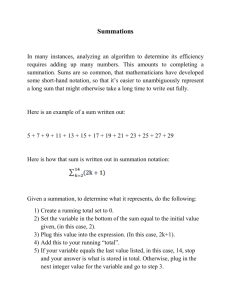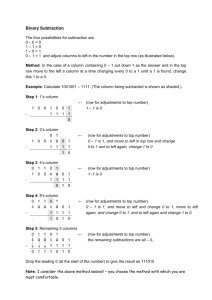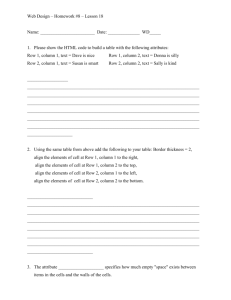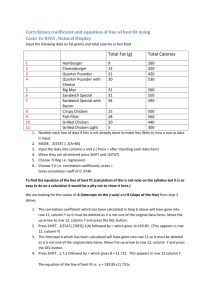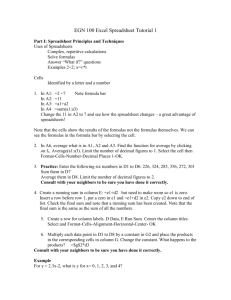THE SUMMATION SYMBOL
advertisement
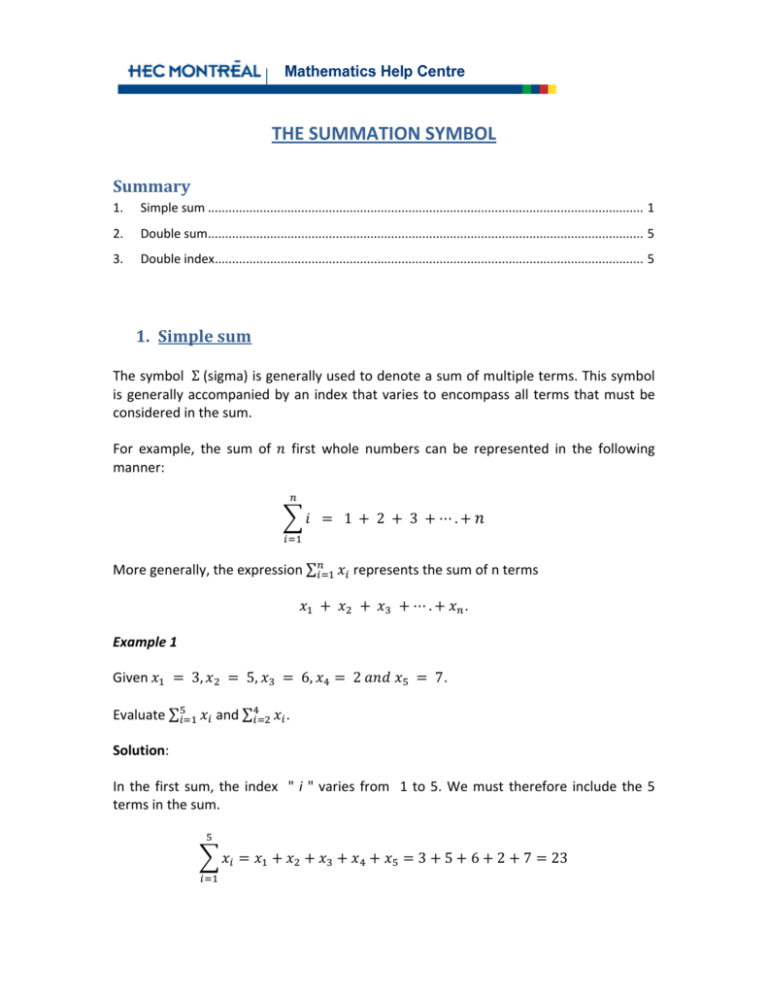
THE SUMMATION SYMBOL Summary 1. Simple sum .............................................................................................................................. 1 2. Double sum .............................................................................................................................. 5 3. Double index ............................................................................................................................ 5 1. Simplesum The symbol Σ(sigma) is generally used to denote a sum of multiple terms. This symbol is generally accompanied by an index that varies to encompass all terms that must be considered in the sum. For example, the sum of first whole numbers can be represented in the following manner: More generally, the expression ∑ 1 2 3 ⋯. represents the sum of n terms ⋯. . Example 1 Given Evaluate ∑ 3, 5, and ∑ 6, 2 7. . Solution: In the first sum, the index " i " varies from 1 to 5. We must therefore include the 5 terms in the sum. 3 5 6 2 7 23 In the second case, the index " i "varies from 2 to 4. Only the terms therefore be considered. 5 6 2 , and must 13 When we use the summation symbol, it is useful to remember the following rules: Example 2 Given 1 3, 5, 6, 2 7 et 2, 8, 3, 6. Verify the three preceding rules with the following sums : 4 4 Page 2 of 6 Solution : 4 4 4 4 4 4 4 3 4 5 4 6 4 2 4 7 92 and 4 4 3 5 6 2 7 4 23 92 b) 4 4 4 4 4 3 2 4 5 4 20 c) 5 8 6 3 2 1 7 6 43 And 3 5 ⋯7 2 8 ⋯ 6 23 20 43 Attention : We must neither confound the expression with Page 3 of 6 nor the expression with Example 3 Given 1 3, 5, 6, 2 7 and 2, 8, 3, 6. a) 3 5 6 2 7 123 and 3 5 6 2 7 23 52 123 b) 3 6 40 ⋯ 42 5 ⋯ 2 5 8 ⋯ 7 6 108 and 3 7 2 8 ⋯ 6 23 20 460 108 Page 4 of 6 2. Doublesum In certain situations, using a double sum may be necessary. You must then apply the definition successively. Example Given 1 3, 2 5, 3 1 2, 1 2 4 We will use the index i for the terms of and index j for the terms of 3 2 3 4 5 2 5 4 1 2 1 4 54 3. Doubleindex To represent the data of a table or a matrix, we often use a double index notation, like where the first index (i) corresponds to the number of the row where the data is located and the second (j) to the column. For example, the term 24 represents the data that is situated at the intersection of the 2nd row and the 4th column of the table or the matrix. Example Given 4 4 1 5 0 3 1 2 1 4 2 3 To carry out the sum of the terms of a row, we must fix the index of that row and vary, for all possible values, the index of the column. For example: ∑ 2 4 1 5 12 (sum of the first row) ∑ 0 3 1 2 6 (sum of the 2nd row) To carry out the sum of the terms of a column, you must fix the index of this column and vary, for all possible values, the index of the row. Page 5 of 6 For example: ∑ 5 2 10 (sum of the 4th column) 3 To carry out the sum of all terms of the table, you must vary both indices and use a double sum: 2 4 1 6 0 3 ⋯ 3 28 Page 6 of 6
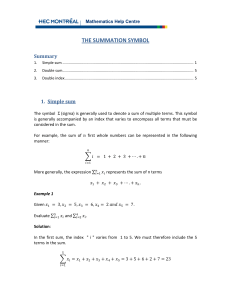




![MA342A (Harmonic Analysis 1) Tutorial sheet 3 [October 29, 2015] Name: Student ID:](http://s2.studylib.net/store/data/010415896_1-9cf3b7b2f94fcd56f13baea47b05fbe2-300x300.png)
